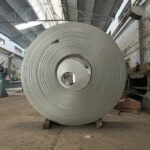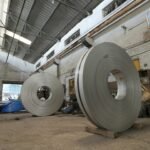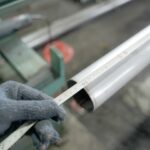In the arena of construction, manufacturing, and engineering, even the smallest material decision can have big outcomes and consequences. So when it comes to stainless steel pipes, two grades dominate the industry named 304 and 316. At a glance, they may seem similar. But dig a little deeper, and you’ll find differences that can mean the difference between long-lasting performance and premature failure.
Whether you’re designing for a kitchen, a chemical plant, or a marine environment, understanding the true strengths and limitations of these two materials isn’t just a technical choice but it’s a smart, cost-effective, and sometimes critical safety decision. This table shown below is here to simplify that decision for you.
Table Showing Difference Between 304 & 316 SS Pipes
| Feature | 304 SS Pipe | 316 SS Pipe |
|---|---|---|
| Main Alloy | 18% Cr, 8% Ni | 16% Cr, 10% Ni, 2% Mo |
| Corrosion Resistance | Good | Excellent |
| Chloride Resistance | Moderate | High |
| Cost | Lower | Higher |
| Strength | Good | Slightly better |
| Molybdenum | Not present | Present (2%) |
| Weldability | Excellent | Excellent |
| Magnetic | Slightly after forming | Less likely magnetic |
| Typical Use | Kitchens, food, architecture | Marine, chemical, pharma |
| Durability | Fair in harsh conditions | Excellent in harsh conditions |
From the table you must have understood that choosing the right pipe material isn’t just about cost or availability but it’s about making sure your system can withstand pressure, corrosion, temperature changes, and time itself. Among the many options available, stainless steel pipes, especially grades like 304 and 316, stand out for their strength, cleanliness, and resistance to corrosion.




